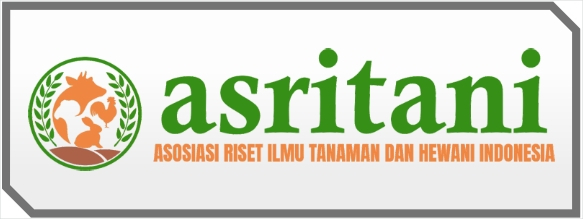An Exploratory Analysis of Foodgrain Growth and Fertilizer Dynamics Across Phases
DOI:
https://doi.org/10.61978/sativa.v1i2.869Keywords:
Indian Foodgrain, Green revolution, CAGR, Globalization, Foodgrain ProductivityAbstract
Since independence, Indian foodgrain has seen substantial modifications throughout many developmental periods, including the pre-Green Revolution era, the Green Revolution, the era of globalization, and the more recent technology-oriented phase. Initially, India relied largely on food grain imports. However, the Green Revolution brought high-yielding cultivars, increased fertilizer usage, and expanded irrigation, resulting in significant productivity improvements, particularly in rice and wheat, and a move toward self-sufficiency. This period also created regional differences in agricultural performance. Post-1991, the globalisation era integrated Indian foodgrain into the international market. While this expanded export opportunities and facilitated access to new technologies, it also increased vulnerability to global price fluctuations and created challenges for small and marginal farmers. The technology-oriented phase further emphasised mechanisation, digital tools, and input intensification. This study examines the long-term growth performance of Indian foodgrain from 1951 to 2022 using secondary data on cereals, nutritional cereals, pulses and total foodgrain. The research is divided into four periods: the Pre-Green Revolution Phase, the Green Revolution and Policy Consolidation, the Globalization Era, and the Technology Era. To assess growth dynamics, the study employs regression models to estimate the Regression-based Compound Annual Growth Rate (CAGR), with corresponding β coefficients, t-statistics, and p-values to determine statistical significance. The results reveal a structural shift from area-led to productivity-driven growth, influenced by increased irrigation and evolving fertilizer consumption patterns, including Nitrogen (N), Phosphorus (P), and Potassium (K). The study highlights phase-wise variation in growth rates, confirming statistically significant improvements in agricultural performance, particularly during the Technology Era.
References
Eliazer Nelson, A. R. L., Ravichandran, K., & Antony, U. (2019). The impact of the Green Revolution on indigenous crops of India. Journal of Ethnic Foods, 6(1), 8. https://doi.org/10.1186/s42779-019-0011-9
FAO, I. F. A. D., UNICEF, W. F. P., & W.H.O. (2021). The state of food security and nutrition in the world 2021: Transforming food systems for food security, improved nutrition and affordable healthy diets for all. FAO. https://doi.org/10.4060/cb4474en
Gupta, J. (2023). The effects of agricultural technology and their potential to revolutionize agriculture. Journal of Agriculture, 6(3), 61–63. https://doi.org/10.37532/.6(3).61-63
Government of India. (2022-2023). Annual report. National Statistical Office, Ministry of Statistics and Programme Implementation.
Kadam, D. M., Chouhan, D., Roy, T., Prajapati, H. A., Tiwari, N., Nandeha, N., & Mishra, R. (2023). Digital agriculture: The future of Indian agriculture. International Journal of Environment and Climate Change, 13(11), 3963–3976. https://doi.org/10.9734/ijecc/2023/v13i113577
Kumar, N., & Sharma, A. (2023). Trend and Growth Performance of Rice in Central Region of Uttar Pradesh. Agro Economist- An International Journal, 10(03), 245–249.
Kumari, N., Mehta, V. P., & Bhatia, J. K. (2020). Foodgrains production in India: Trends and decomposition analysis. Economic Affairs, 65(3), 333–342. https://doi.org/10.46852/0424-2513.3.2020.3
Mallika, V., & Mageshwari, J. (2024). An analysis of agricultural growth in India since Green Revolution. International Journal of Science and Research, 13(3). https://doi.org/10.21275/SR24312143932
Menon, S. (2022). Green Revolution and recent technological innovations: Thinking for future solutions. International Journal of Health Sciences, 6(S4), 5071–5079. https://doi.org/10.53730/ijhs.v6nS4.9273
Mohana Priya, K. S., Senthilkumar, R., Pangayar Selvi, R., & Muralidharan, C. (2020). An economic study of growth dimension on food grains in India. International Journal of Current Microbiology and Applied Sciences, 9(11), 308–316. https://doi.org/10.20546/ijcmas.2020.911.037
Mohanty, A. K. (2022). Impact of technological innovation on agricultural productivity and food security in India. IJFANS International Journal of Food and Nutritional Sciences, 1(12), 1–7.
Patil, P. (2019). Impact of globalisation on Indian agriculture. Journal/Conference Name If Available, 2, 86–88.
Polisetty, K., Chesneau, C., Paltati, G., & Paidipati, K. (2023). An empirical study on assessment of trend analysis: Food grain production in India. Journal of Agricultural Sciences (Belgrade, 68(3), 377–387. https://doi.org/10.2298/JAS2303377P
Prajneshu, & Chandran, K. P. (2005). Computation of Compound growth rates in Agriculture: Revisited. Agricultural Economics Research Review, 18, 317–324.
Prakasa Rao, E. V. S., & Ramesh, K. (2022). Digital agriculture: Prospects and challenges in India. Indian Journal of Fertilisers, 18(4), 334–342.
Greeshma R., Bhave M.H.V., & Kumar P.S. (2017). Application of Growth Models for Area, Production and Productivity of Sugarcane crop for Coastal Andhra Region of Andhra Pradesh. International Journal of Agricultural Science and Research, 7(1), 7–14.
Rani, M., & Kaur, R. (2023). Growth of foodgrain production in India. Economic Affairs, 68(2), 1081–1088. https://doi.org/10.46852/0424-2513.2.2023.12
Rani, N. (2014). Impact of globalization on Indian foodgrain. International Journal of Enhanced Research in Management & Computer Application, 3(12), 61–64.
Satapathy, A., Mishra, A.K., Mishra, S.N., Mishra, R.K., & Sarangi, K.K. (2021). Economic analysis of growth and instability of maize in Odisha. The Pharma Innovation Journal, 10(11S), 3016–3020.
Sharma, P. (2022). Impact of globalization on Indian foodgrain: An analysis. Media International Australia Incorporating Culture and Policy, 7(1), 1–12.
Shinde, U. R. (2015). Globalization and Indian foodgrain : General consequences. Asian Journal of Management, 6(2), 141–145. https://doi.org/10.5958/2321-5763.2015.00021.9
Singh, J. P. (1993). Green revolution versus instability in foodgrain production in India. Agribusiness, 9(5), 481–493.
Soma, M. K., Shaheen, M., Zeba, F., & Aruna, M. (2019). Precision agriculture in India—Challenges and opportunities. SSRN Electronic Journal. https://doi.org/10.2139/ssrn.3363092
Tripathi, A., & Prasad, A. R. (2009). Agricultural development in India since independence: A study on progress, performance, and determinants. Journal of Emerging Knowledge on Emerging Markets, 1(1). https://doi.org/10.7885/1946-651X.1007
Yadav, S., & Anand, S. (2020). Green Revolution and food security in India: A review. National Geographical Journal of India, 65(3), 312–323.
Zaveri, E., & Lobell, D. B. (2019). The role of irrigation in changing wheat yields and heat sensitivity in India. Nature Communications, 10, 4144. https://doi.org/10.1038/s41467-019-12183-9




